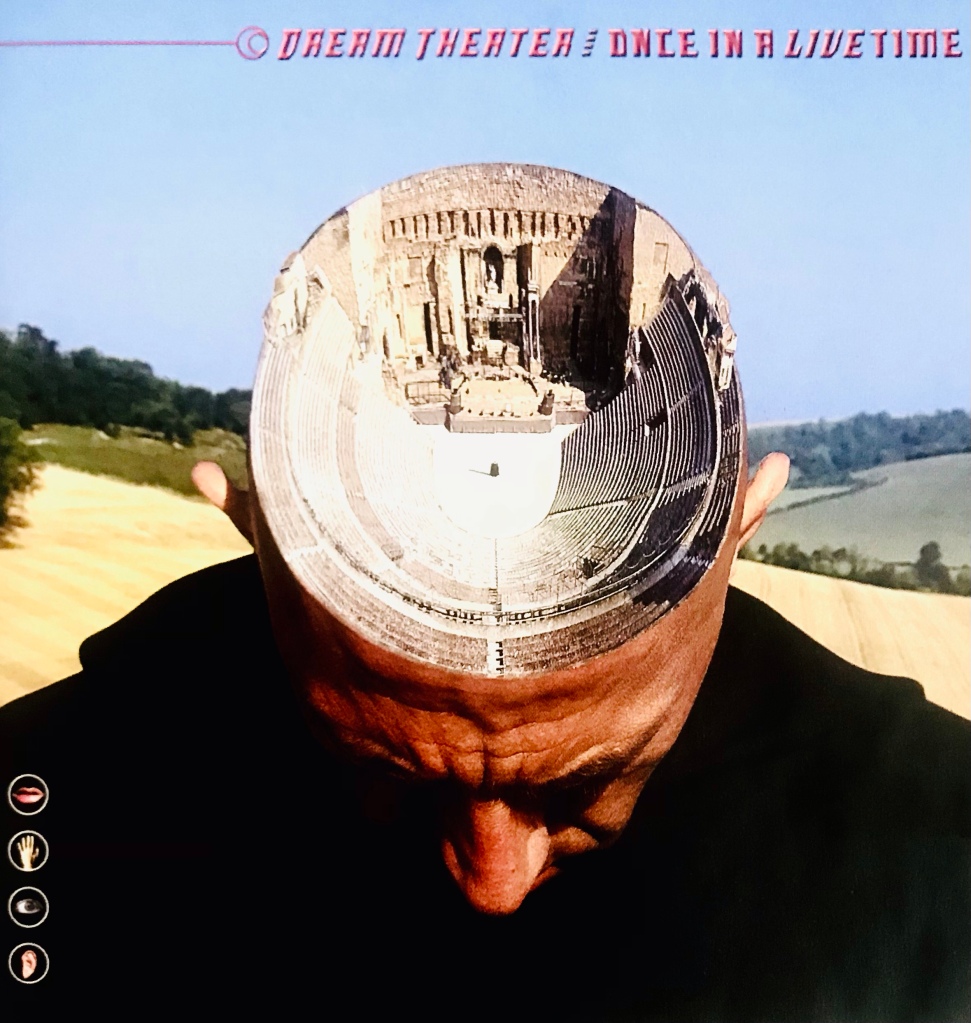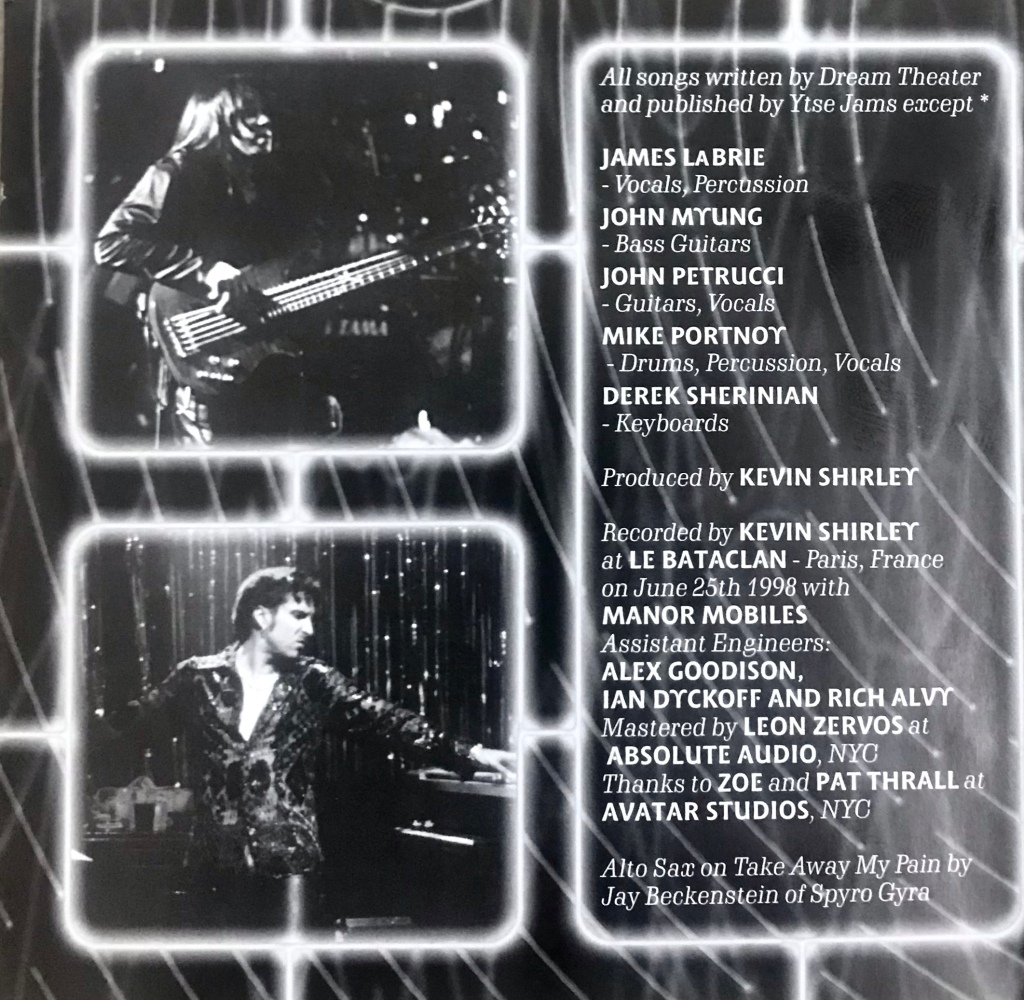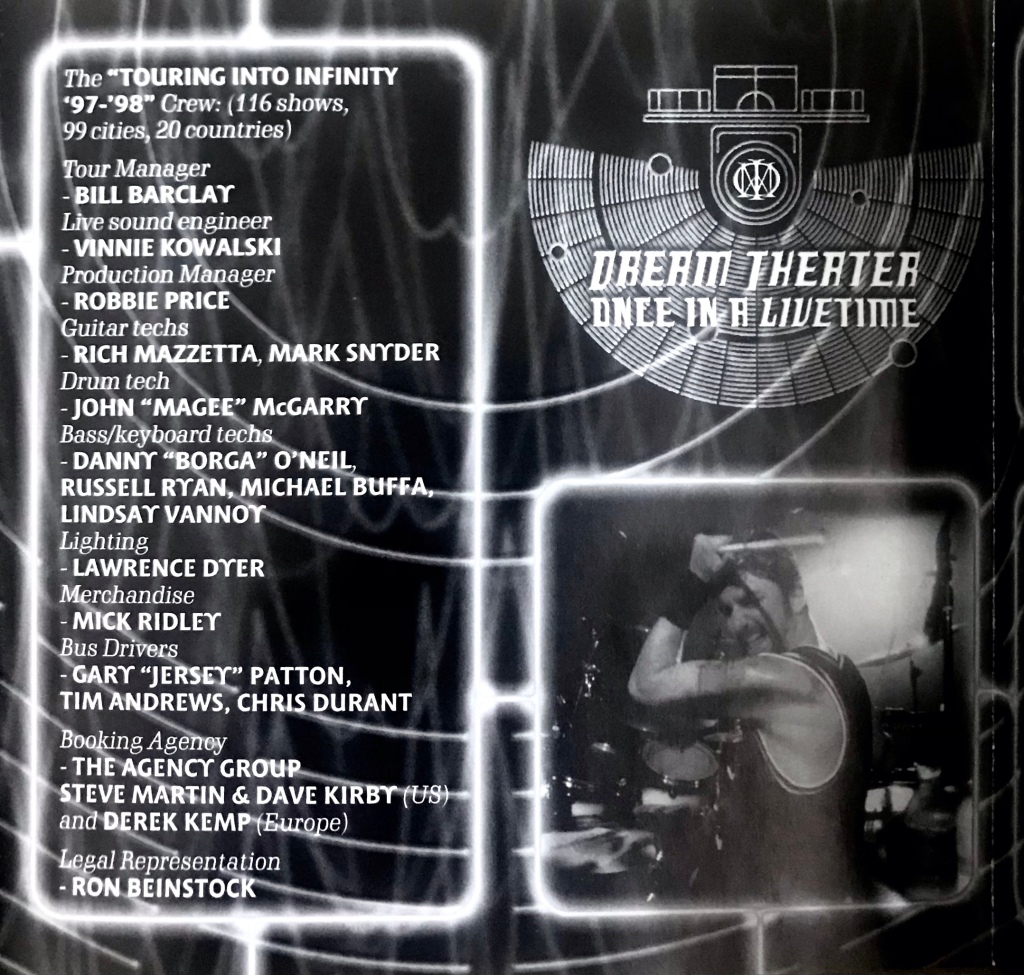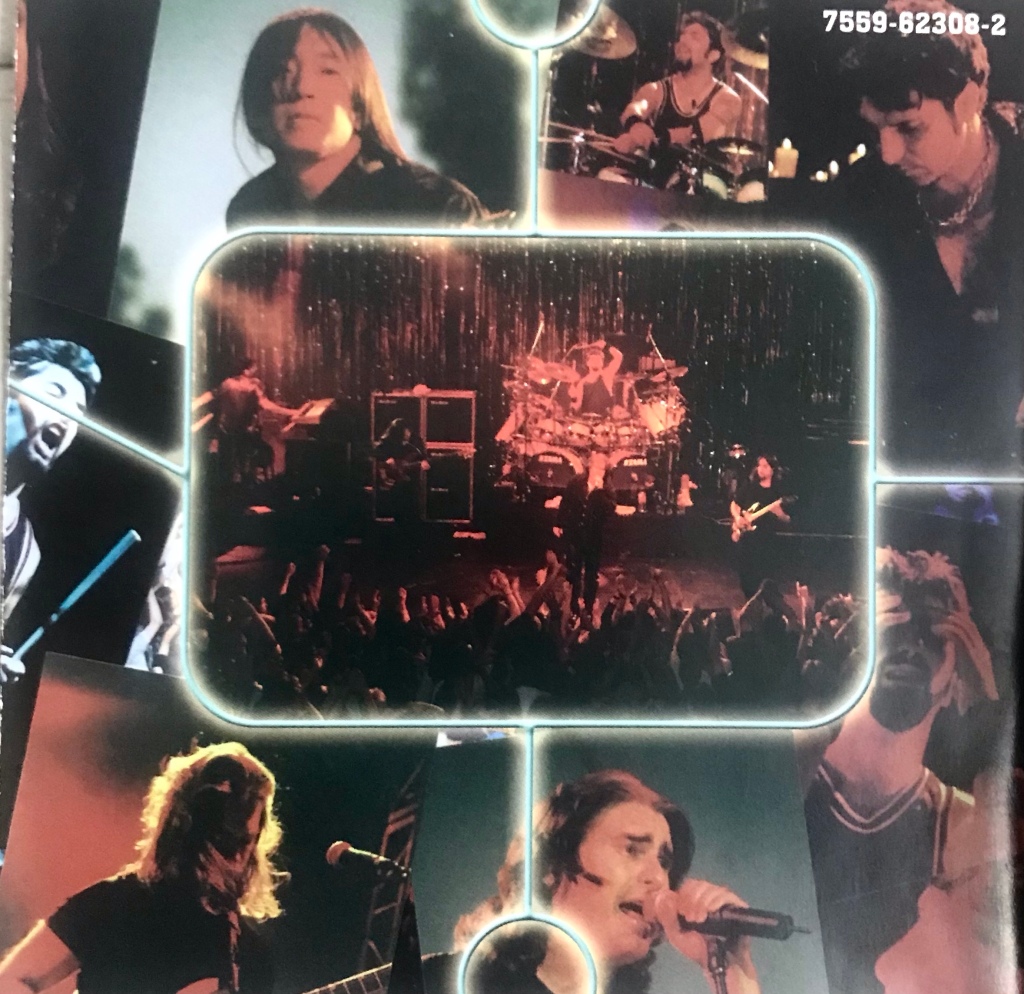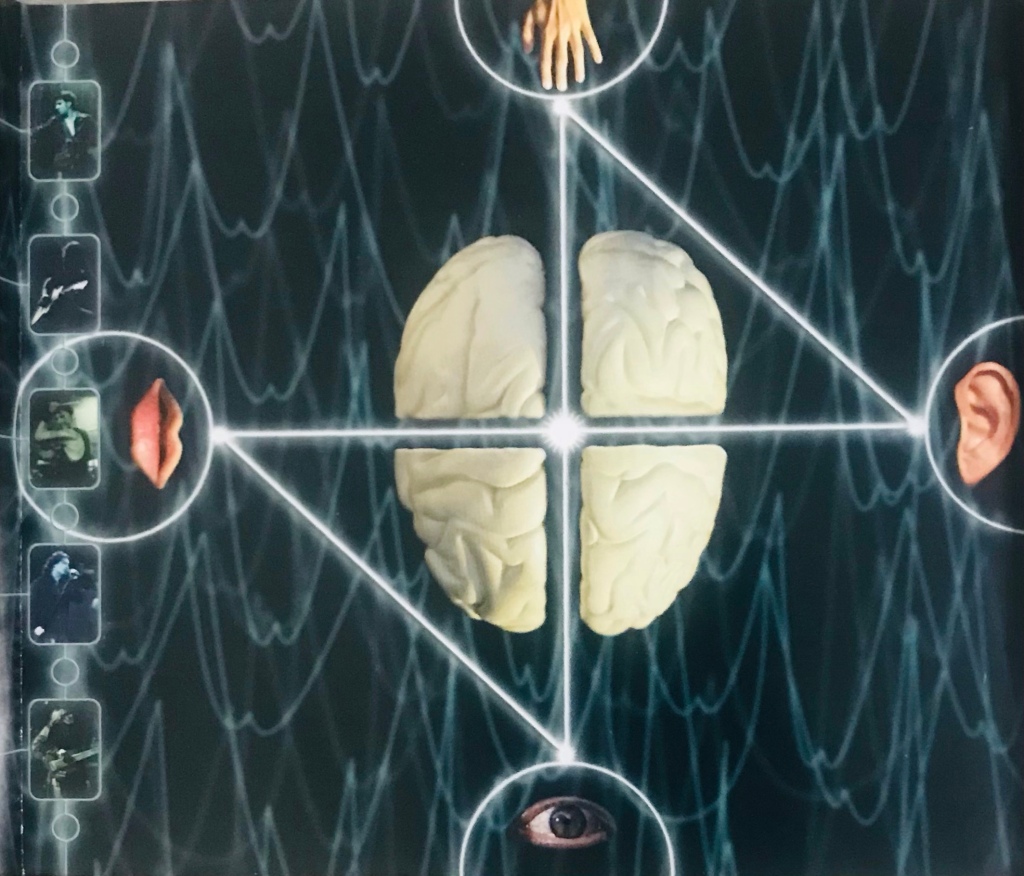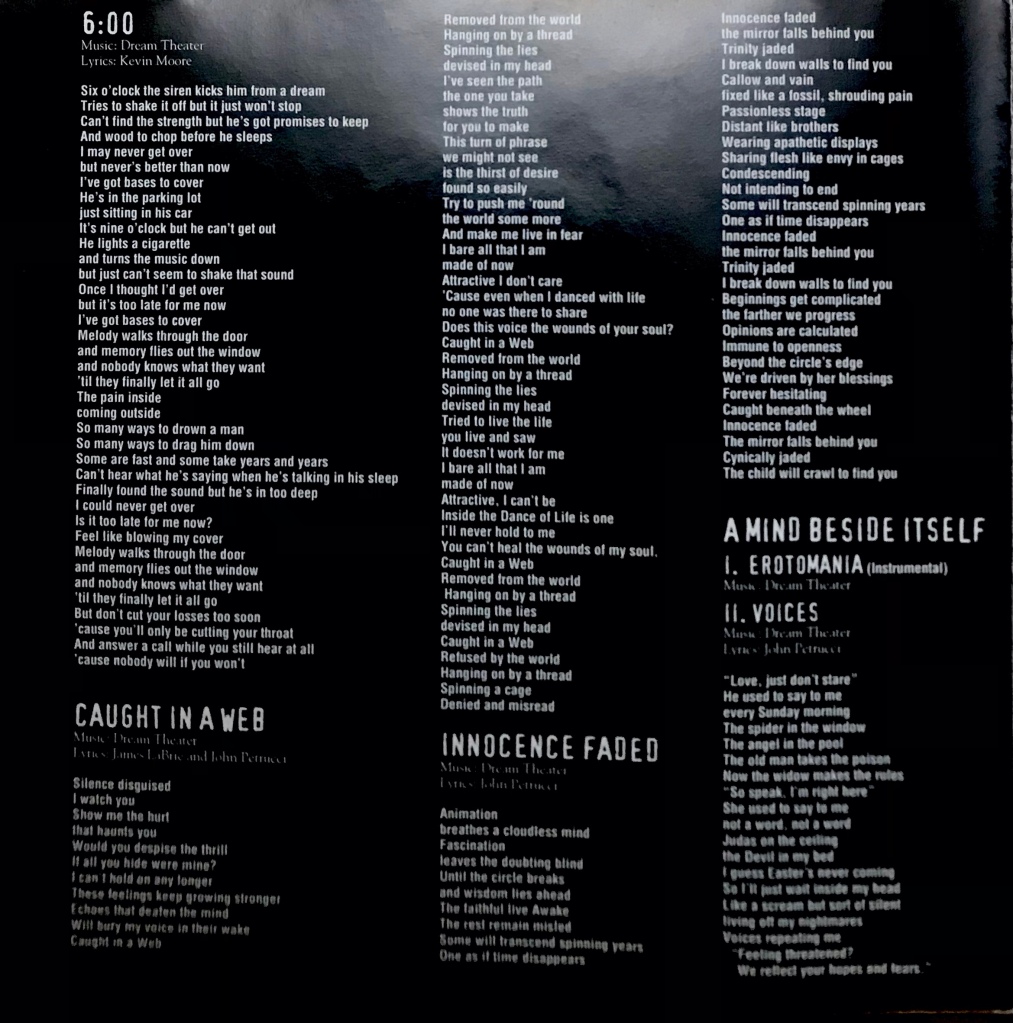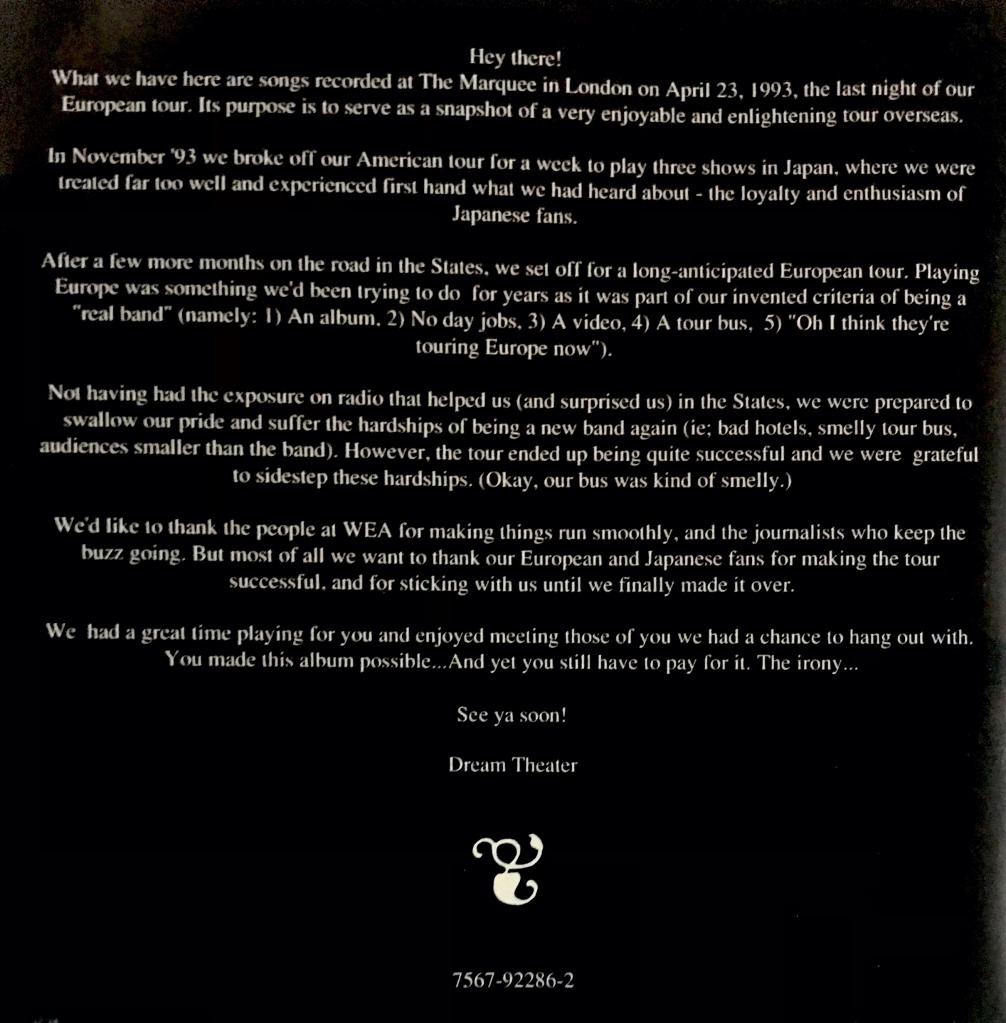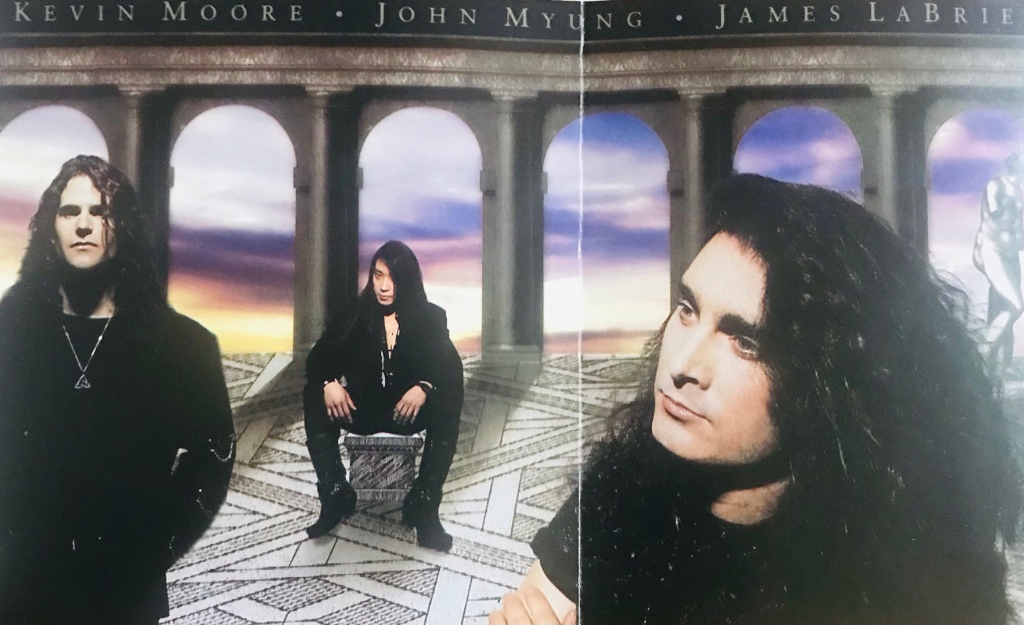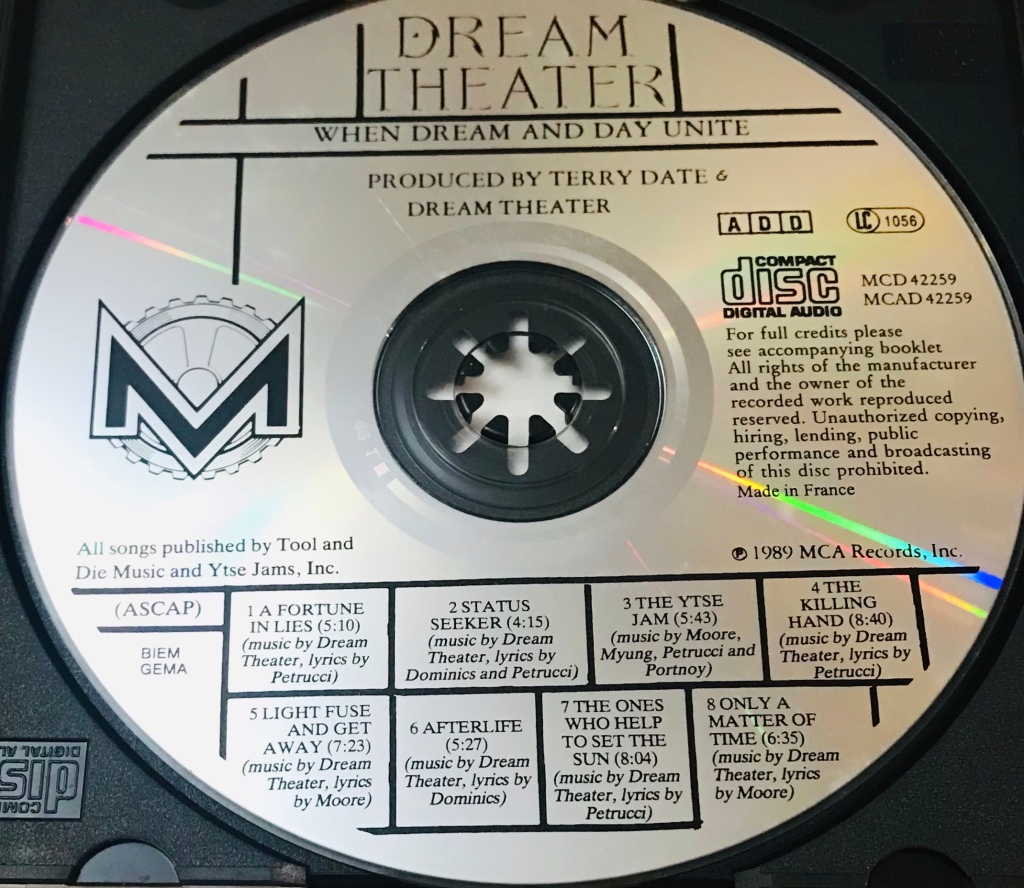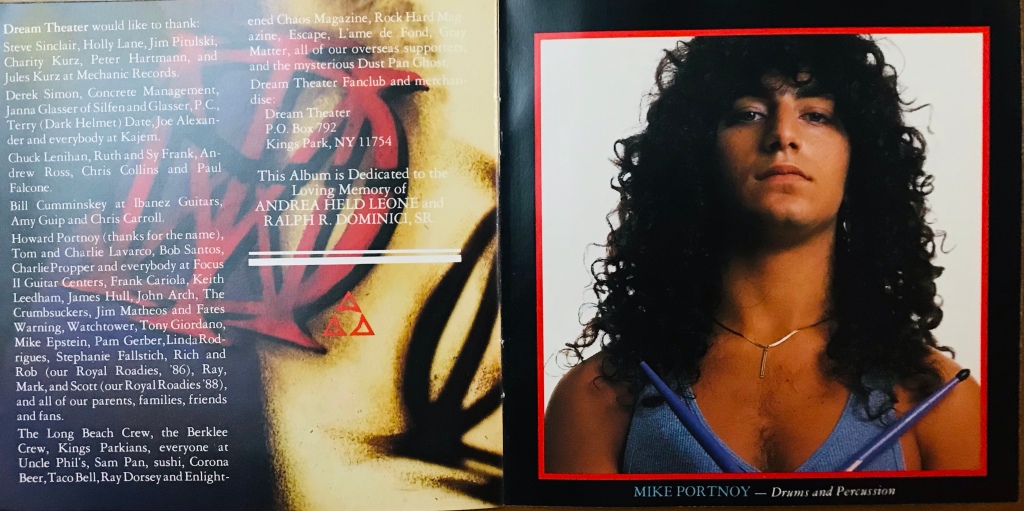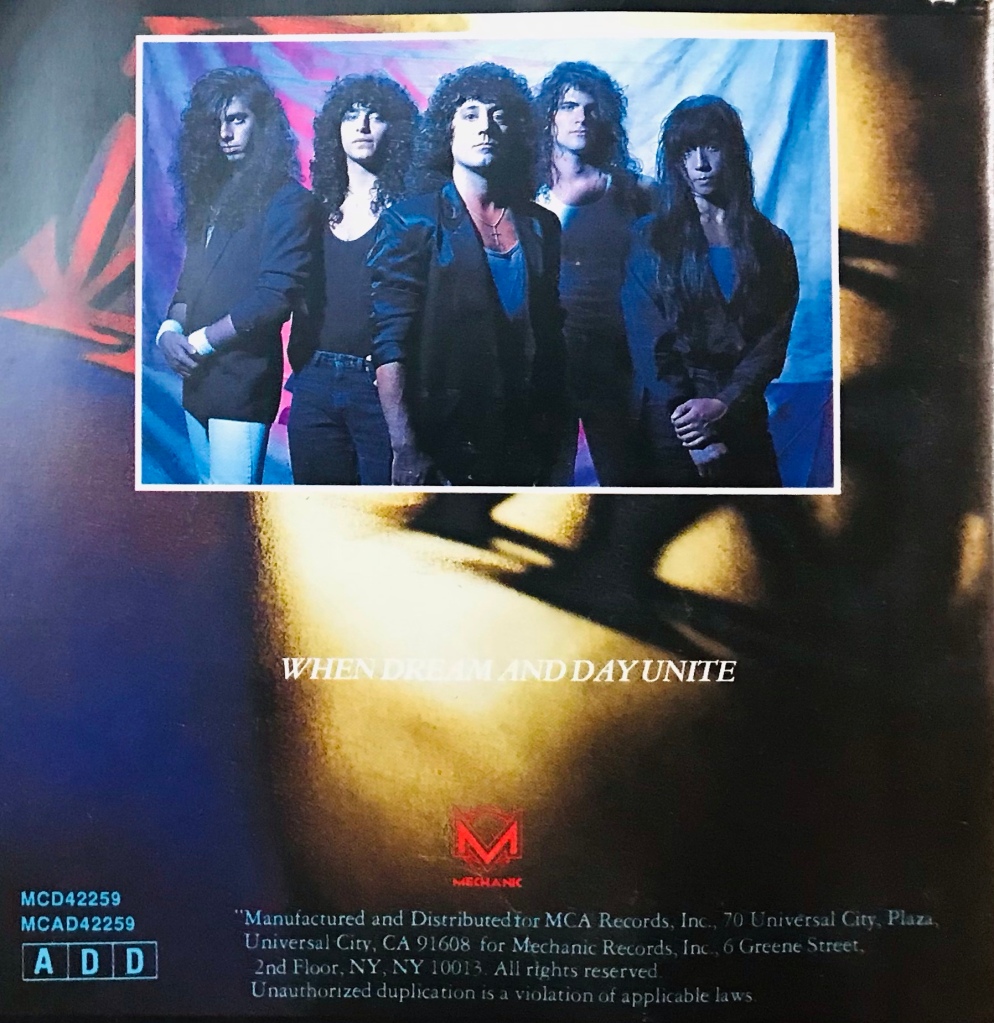
From disillusionment with the “Falling Into Infinity” saga, Mike Portnoy got an opportunity via Mike Varney’s “Magna Carta Records” to assemble a supergroup of progressive rock musicians in 1997. The Liquid Tension Experiment was born, consisting of Portnoy on drums, John Petrucci on guitar, Tony Levin on bass, and keyboardist Jordan Rudess, who had finished his commitments with the Dixie Dregs.
Portnoy and Petrucci used this little get together to keep on convincing Rudess to join Dream Theater. If you remember, Rudess was asked to replace Kevin Moore, however he declined that offer and Derek Sherinian was brought in. But in 1999, he accepted the offer to become the third full-time Dream Theater keyboardist, replacing Sherinian.
With Dream Theater assembled, the band would enter the studios with complete creative control for the first time.
They assembled an inspiration corner in the studio, made up of concept albums from The Who (“Tommy”), Genesis (“The Lamb Lies Down on Broadway”), Roger Waters (“Amused to Death”), Radiohead (“OK Computer”) , Queensryche (“Operation: Mindcrime”), The Beatles (“Sgt. Pepper’s Lonely Hearts Club Band”), Marillion (“Misplaced Childhood”) and Pink Floyd (“The Wall” and “The Final Cut”).
The band began by revisiting a song called “Metropolis – Part II”, which had been partially written during the “Falling into Infinity” sessions but not completed or used on that album.
At 21 minutes in length as a demo, they decided to expand the song into a complete concept album.
The album was originally mixed by David Bottrill, but only a few of his mixes made it on the final album. After playing the mixed album to Kevin Shirley, Petrucci kept asking Shirley for his opinion. Shirley kept telling Petrucci that the mixes are fine, however Petrucci did not believe him. Eventually Shirley said that the mixes could be better and suddenly Shirley had a job to remix the album. This of course was of a concern to Elektra who felt that the band was just throwing money away.
The album is seen as a sequel to the song”Metropolis—Part I: ‘The Miracle and the Sleeper'”, but the “Part I” was added by Petrucci as a joke and there was no intention to make a “Part II”.
But in 1999, “Metropolis Pt. 2: Scenes from a Memory” was released on Elektra Records. While it didn’t set the Billboard Charts on fire, it is seen as the bands masterpiece and it did exceed the sales target that Elektra had for it.
The story follows a character called Nicholas, who has recurring dreams, so he visits a hypnotherapist. During the sessions, he discovers that he is the reincarnation of Victoria Page, who was murdered in the 1920’s. The story takes place in the 1920’s and the 1990’s as all the characters are still in each other lives. For example, the person who killed Victoria is called Edward and in his reincarnation, he is the Hypnotherapist treating Nicholas.
Scene One: Regression
A ticking metronomic clock.
“Close your eyes and begin to relax” are the first words you hear. The voice of the Hypnotherapist is Terry Brown (yes that Rush producer Terry Brown) although he is uncredited.
“Take a deep breath, and let it out slowly. Concentrate on your breathing. With each breath you become more relaxed.”
There is a story here as well. Terry recorded his voice as a rough guide. Instead the band put it on the album, didn’t give him credit and then used it in the live setting. This didn’t impress Terry, so he lawyered up and set em a bill for using his voice. The band paid the bill and then had to get a new Hypnotherapist voice for the tour.
As the Hypnotherapist counts down, the acoustic guitar of John Petrucci starts up and gets louder as the countdown gets lower.
Then James LaBrie comes in with the vocal melody.
Safe in the light that surrounds me / Free of the fear and the pain / My subconscious mind / Starts spinning through time / To rejoin the past once again
Scene Two: I. Overture 1928
An instrumental, with a lot of cool riffs and some nuggets from the first Metropolis song.
I like the way it starts off but the best part is the George Lynch influenced tritone riff that cames straight after.
Check out the small lead section at 2.32.
Scene Two: II. Strange Deja Vu
“Overture” segues into “Strange Déjà Vu”.
“In her eyes – I sense a story never told / Behind the disguise – There`s something tearing at her soul”.
Nicholas learns that Victoria was murdered, and that he was actually Victoria in a past life. He believes that he needs to solve her murder.
Check out the “Carry On My Wayward Son” influences at 2.40.
Scene Three: I. Through My Words
The piano riff is haunting and I like it.
“We’re sharing one eternity / Living in two minds”
Scene Three: II. Fatal Tragedy
“This fatal tragedy was talked about for years” / Victoria`s gone forever / Only memories remain / She passed away / She was so young”
The last 40 seconds of the song has this cool open string harmony solo section which I like.
And it ends with the voice of the Hypnotherapist;
“Now it’s time to see how you died. Remember that death is not the end but only a transition.”
Scene Four: Beyond This Life
The opening riff is wicked. Heavy almost grungy in sound yet progressive. And the fast downstroke picking gives way to a single note variation.
“Murder, young girl killed. Desperate shooting at Echoes Hill. Dreadful ending, killer died. Evidently suicide”
The lyrics are written like a newspaper article.
Vocally it feels like a Tool/Maynard vocal melody in the verses. Really focused on the correct syllables.
Scene Five: Through Her Eyes
I’m learning all about my life
By looking through her eyes
Petrucci knows how to construct an emotive song and to nail an emotive lead.
Almost countryish in its acoustic strum and Portnoy’s restraint drumming, its Petrucci and LaBrie that shine here.
This is the part of the story where Nicholas realises that he is unable to get on with his life until he solves the murder of his past life.
Scene Six: Home
My favourite song on the album because its Dream Theater taking something contemporary like Tool and making it their own. If you want to press play on a track, this is the one.
The city – it calls to me
Decadent scenes from my memory
Sorrow – eternity
My demons are coming to drown me
From a story point of view, Julian is giving in to his cocaine and gambling addictions, which drives Victoria away from him. Edward feels guilty about deceiving his brother, but decides that his love for Victoria is greater than his guilt, and he seduces her when she is vulnerable following her breakup.
Scene Seven: I. The Dance of Eternity
It’s an instrumental, seen as their best.
Scene Seven: II. One Last Time
Are these her memories
Awakened through my eyes
A ballad with lyrics by James LaBrie.
Scene Eight: The Spirit Carries On
I used to be frightened of dying
I used to think death was the end
But that was before
I`m not scared anymore
I know that my soul will transcend
The guitar solo on here is excellent and the gospel choir afterwards (orchestrated by Rudess) gives me goose bumps.
Scene Nine: Finally Free
It begins with the voice of the Hypnotherapist.
“You are once again surrounded by a brilliant white light. Allow the light to lead you away from your past and into this lifetime.”
The narrative moves between different perspectives, revealing that Edward wished his romance with Victoria was more than a simple affair. As Victoria begins to reconcile with Julian, Edward confronts the two of them, murders them, then stages the scene and assumes the role of the witness for the newspaper column. The flashback includes Edward telling Victoria to “open [her] eyes” before killing her, echoing the same choice of words the hypnotherapist used to wake Nicholas from his hypnotic trance.
In the present, Nicholas arrives home, followed by the Hypnotherapist. Nicholas is startled by another request to “open [his] eyes”, before the album cuts to (and concludes on) phonographic static. You don’t hear the killing, but the hypnotherapist is Edward’s reincarnation, and he has killed Nicholas to complete the cycle yet again.
The drumming of Mike Portnoy on the last three minutes of this song is essential listening for any drummer on how to add texture and technicality and still sound accessible.
The World Tour to promote the album was their biggest. The whole album was played in its entirety along with actual footage on the big screen.
A show was filmed and released as a DVD in 2002. Even Kevin Moore was invited to participate in this show, to perform “Space Dye Vest” and “Learning To Live”. But he declined the offer and every other Dream Theater offer since his departure.
Crank it.
